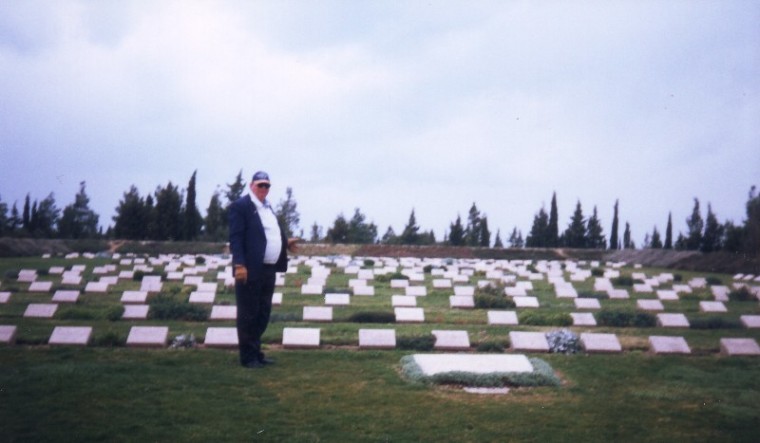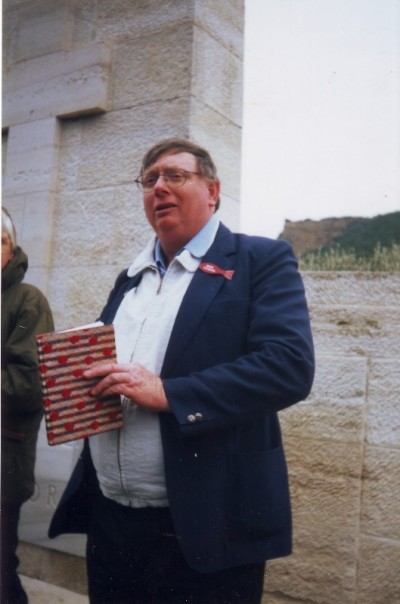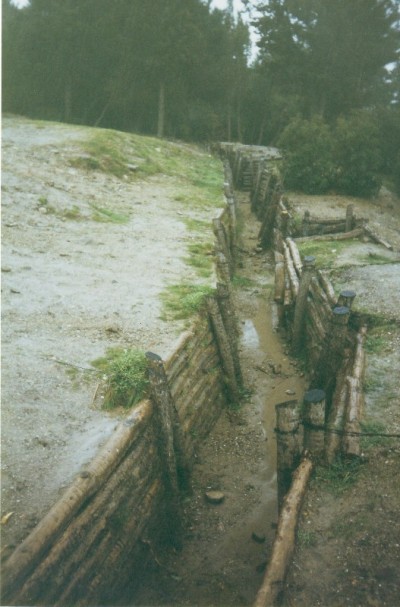
My son who lived in England for seven years. explained that in the UK, there is an equivalent of Anzac Day (April 25). It is always celebrated on the 11th hour on the 11th day of the 11th month. When the armistice was signed to end the Great War 1914-18.
We in Australia call this 'poppy day', and organisations such as the RSL (Returned Services League) raise money by selling paper poppies, in remembrance of those that grew in Flanders where many of our young boys fought and died during WWI.
We have two-minutes of silence at 11 am, our time, wherever we are and whatever we are doing, following the tradition started in London in 1919; but usually nothing else of a public commemoration (possibly a War Memorial ceremony in Canberra).
However, in England this is the day that there are the community marches of old and new soldiers as there are in Australia, but it is not a public holiday, as is our Anzac Day. My son reports that it has a different feel about it; he told me that whereas he feels that our services represent a unique expression of what was lost, Remembrance Day in Britain is a kind of a celebration of victory.
Australians, it seems, don't do victories very well. Instead, as a nation we're very good at recognising the cost of the victory. It is this same "expression of the cost" of victory that our sporting teams celebrate – the hard work, the sacrifices – even recognising that of our parents and family members.
It is this image of Anzac that came to me pondering on all those photographic images of women saying goodbye to their military men. These young women recognise the cost of her soldier man's service to the nation. They are biding farewell in an embrace.
This image of Anzac is just as haunting as those images from the trenches of WWI of soldiers with their sunken exhausted eyes. It is just as powerful as those World War II images of the Kakada Trail, with exhausted troops climbing the muddy mountain tracks. It is just as worrisome as that Vietnam War image of the mother carrying her baby, burnt by napalm.

Domestic images
But this is a different image. It confronts the nation with a different cost. This is not the war-weary image. This is not an image of destruction and bombed out buildings. This is not an image of a famous military leader imploring his troops. This is not an image of a political leader calming troubled waters.
No, these domestic images are nevertheless haunting because they bring to us a number of other messages for which we are all familiar and in some sense would rather not talk about.
This image possibly conveys the heartache of not seeing a treasured partner for months, maybe years, possibly even a final tragic embrace.
The image possibly conveys a lost love, a goodbye, won't be seeing you again, you've made your decision and I've made mine.

The image certainly conveys separation and distance and aloneness. This is the image of the cost of Anzac.
There is a perceived sadness about such images; yet, there is also a sense of a future victory. All this has been reflected in recent years there have been a number of television series on British and American women on the home front.
As a Christian Minister reflecting on ANZAC day and that it encompasses, and the many times over 39 years I have spoken at ANZAC services, I am reminded that in the same sense that the Gospel of Jesus Christ conveys sadness and loss, but yet a future victory.
In Christian theology, the Cross of Calvary is the first part of the story, whereas the resurrection celebrates a certain victory. This is the message that Christian chaplains bring to their military charges. In this I am certain of consolidation and ministrations to those in service to the nation.

Dr Mark Tronson - a 4 min video
Chairman – Well-Being Australia
Baptist Minister 45 years
- 1984 - Australian cricket team chaplain 17 years (Ret)
- 2001 - Life After Cricket (18 years Ret)
- 2009 - Olympic Ministry Medal – presented by Carl Lewis
- 2019 - The Gutenberg - (ARPA Christian Media premier award)
Gutenberg video - 2min 14sec
Married to Delma for 45 years with 4 children and 6 grand children